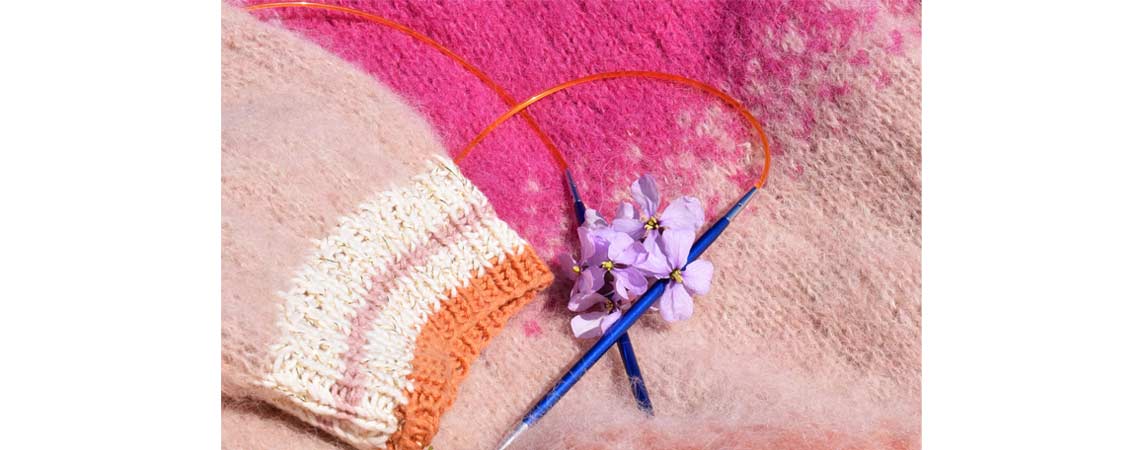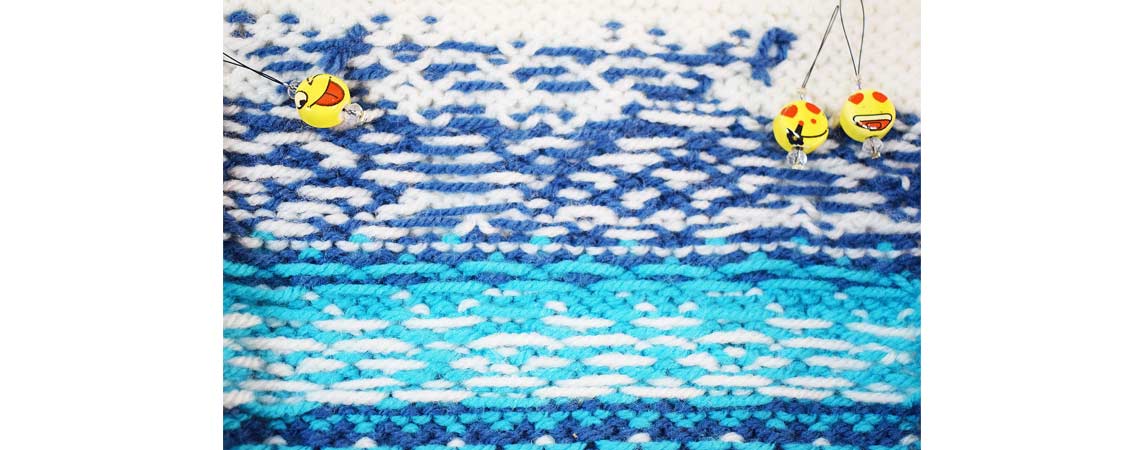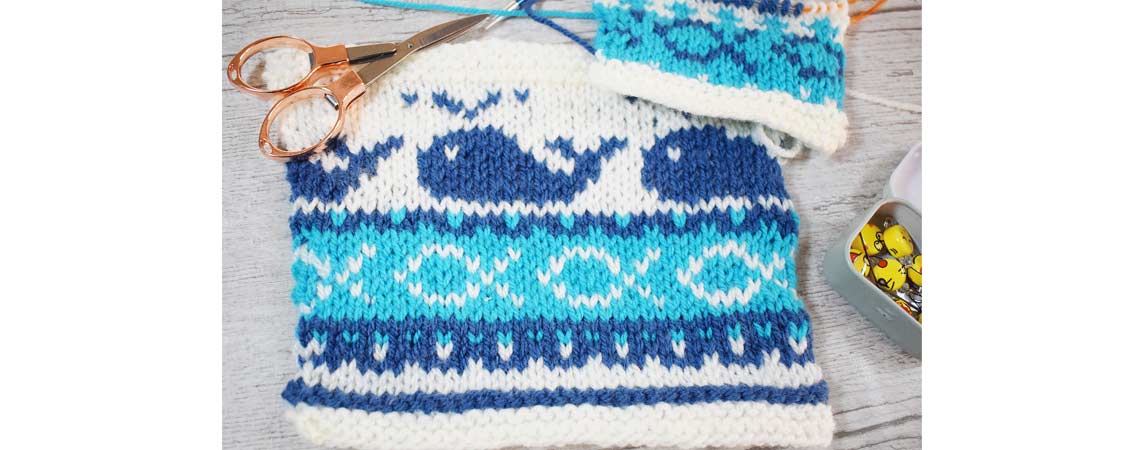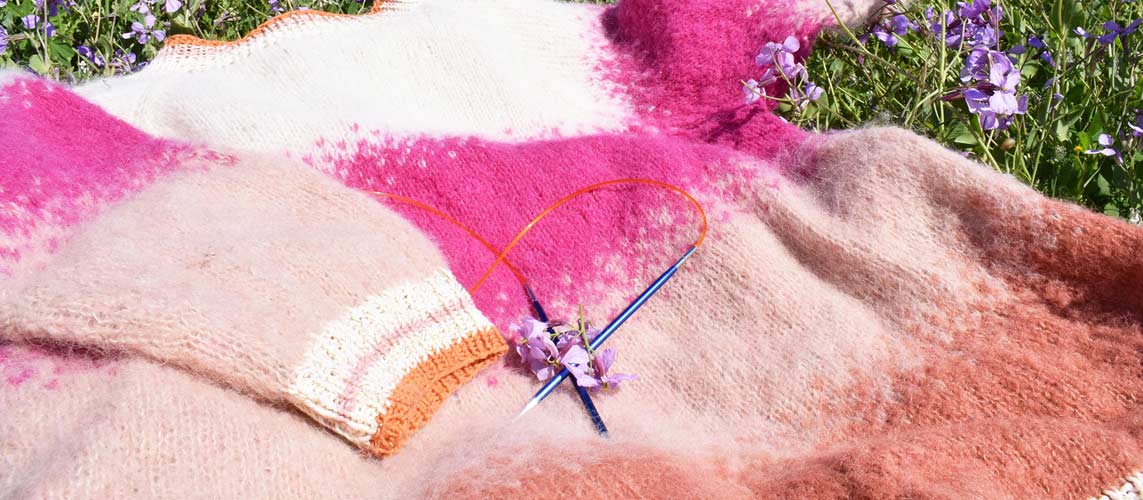Free pattern for our Easy Fair Isle spring jumper
A tiny island in the North Sea has given the name to a knitting trend that has made its triumphant march around the globe. The Fair Isle style of colour work already came to life about 500 years ago, when the island’s sheep farmers came in contact with Portuguese traders who wore particularly fancy clothes.
Over the years the women of the Outer Hebrides islands invented their very own method of knitted colour work which is now celebrating quite a comeback.

What exactly are the characteristics of Fair Isle knitting?
- Fair Isle patterns are usually knitted on circular knitting needles in stockinette stitch the round, meaning you only have to produce knit stitches and can concentrate on your knitting pattern. Of course, it is also possible to craft flat pieces using the Fair Isle method. Then you will however always have to purl the stitches at the wrong side of your project which means you also have to read your pattern backwards.
- Most patterns do not employ more than two colours in a single round. You can vary the colours and hues as often as you like throughout the pattern (perhaps this way you work through your leftover yarn stash). The oftentimes amazing effects true Fair Isle masters produce are created by frequent colour changes, sometimes after every two rounds. This way, you do not have to handle more than two yarn strands at the same time in a round.
- Fair Isle knitting stands out for repetitive patterns usually knitted in the round. Though many colours can be used in one Fair Isle project, there are usually not more than two employed in the same round. So, depending on your pattern, you choose between a dominant and a subordinate or secondary colour strand for each round, the dominant meaning simply the one with the most knit stitches, whereas the second yarn thread is being carried along at the wrong side of your project and is woven into the strands of your dominant colour after every three or four stitches.
- At the beginning, you may wish to choose a simple pattern which does not require more than three or four stitches at once. It is important that the floats created by your secondary colour are neither too tight nor too loose. Otherwise your pattern might obtain a wobbly and irregular look. Although this can be blocked out in many cases, make sure all stitches are neatly stretched out on your needle as you go and double check on the floats in the back every once in a while.
Which are the best knitting needles to use for Fair Isle work?

A needle with a long and slightly tapered tip is recommendable when you are just starting out with your first colour work project, as it will give you the required stability when grabbing and weaving in your secondary strand of yarn. All the needles from our Zing series or our Ginger and Symfonie range of knitting needles are wonderful choices.
At the beginning, you do not want to use a slick metal needle, and both the wooden choices and our Zing range still provide sufficient grip ensuring your stitches do not slip and fall off.
For more experienced Fair Isle knitters the needles from our Karbonz series are a great choice. They still offer some grip on their surface and additionally come with a slightly more pointed needle tip, with which even finer yarns can be processed smoothly and hassle-free.

What is the best yarn to use for Fair Isle knitting?
While any stretchy kind yarn will produce a decent Fair Isle effect, wool is probably on top of the eternal list of best yarns for colour work. It is stretchy enough to weave in your secondary strand or eventually smooth out any irregularities in the outcome of your pattern. Just bear in mind that the fabric the Fair Isle style creates is both thick and dense. So if you wish to knit with very bulky yarn, you might end up with a really heavy garment, later on.
We hope our brief introduction to Fair Isle knitting has inspired you to go for it and give Fair Isle a try yourself. Below, we have included a free pattern for a very easy and colourful Fair Isle Spring Jumper. Also, check out our blog on how to block professionally in order to give your stitches the best possible finish.
Free Pattern for Fair Isle Spring Jumper












